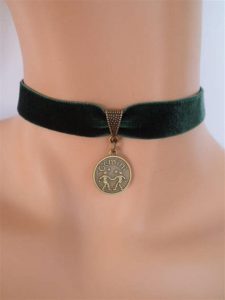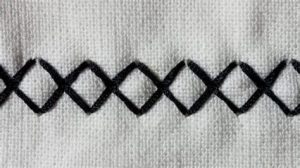 Carmen Maria Machado uses comedy and horror to create awareness of how women’s bodies are used for the pleasure of men while they disregard women’s physical and emotional needs.
Carmen Maria Machado uses comedy and horror to create awareness of how women’s bodies are used for the pleasure of men while they disregard women’s physical and emotional needs.
The story opens with the narrator giving the reader parenthetical directions for how to read the story out loud. These instructions allow the reader to visualize the actions of the narrator:
If you are reading this story out loud, make the sound of the bed under the tension of train travel and lovemaking by straining a metal folding chair against its hinges. When you are exhausted with that, sing the half-remembered lyrics of old songs to the person closest to you, thinking of lullabies for children. (pg.12)
The first-person narration makes the voice more personal, as if a close friend is telling the story. “The Husband Stitch” is narrated by an anonymous female (any, all women) who describes her interactions with males through many years of her life. The reader is told how this woman, like many others, gives of herself to please men, from her childhood to a young woman losing her virginity to her marriage and the birth of her son. She gives her husband everything he wants, except the ribbon she wears around her neck, which he remains curious about and attempts several times to remove. The husband’s persistence in wanting to touch the ribbon is so he can have complete power over his wife. However, the ribbons that the women wear are symbols of beauty, pain, and the innermost part of themselves that is not to be shared.
“– Oh, this? I touch my ribbon at the back of my neck. It’s just my ribbon. I run my fingers halfway around its green and glossy length and bring them to rest on the tight bow that sits in the front. He reaches out his hand, and I seize it and push it away.
– You shouldn’t touch it, I say. You can’t touch it.” (pg.4)
The title of the story, “The Husband Stitch,” is in itself an example of male dominance over women. Women have been subjected to having an extra stitch in their vagina, to repair the perineum that has been torn or cut during childbirth. This procedure is to enhance a man’s sexual experience but can be very painful and uncomfortable for the woman.
” My husband jokes around with the doctor as he holds my hand.
– How much to get that extra stitch? he asks. You offer that, right?…
Neither man turns his head toward me.
The doctor chuckles. You aren’t the first – “(pg.17)
 The narrator also tells stories of women who have made bad choices. She says,” Or perhaps the moral is that brides never fare well in stories, and one should avoid either being a bride, or being in a story. After all, stories can sense happiness and snuff it out like a candle…” (pg.11) This allows the reader to understand that the narrator is not alone in her loss of self, the control men have over women, and that she has made a mistake in marrying.
The narrator also tells stories of women who have made bad choices. She says,” Or perhaps the moral is that brides never fare well in stories, and one should avoid either being a bride, or being in a story. After all, stories can sense happiness and snuff it out like a candle…” (pg.11) This allows the reader to understand that the narrator is not alone in her loss of self, the control men have over women, and that she has made a mistake in marrying.
When she finally gives in to her husband’s desire to remove her ribbon, she loses her life-her “self.”
Your post gave me a whole different perspective on this story! When I was reading I didn’t see it as awareness of how woman are used for men’s pleasure. I see the story completely different now!
I strongly agree with your interpretation of the narrator losing her identity in the end due to her finally giving in to her husband. I never even considered this while reading but realize how true it is after looking back on the story; the ribbon is a small way for the narrator to maintain some control and independence over her body, and with the story’s ending comes the loss of both.
I agree with you and Mary. This story is essentially about the narrator maintaining control and independence of her body by denying her husband the green ribbon. Her husband and the doctor, two people who should be trusted, promote rape culture in their own ways; her husband through his obsession with the ribbon and his joke with the doctor about the stitch, and the doctor via the medical procedure he performs without the narrator’s consent.
In response to the idea that perhaps the ribbon is a way to maintain a type of control over her partner, I wouldn’t exactly agree with that seeing as she describes it as something shameful that only girls are born with. The sigh of relief that she has when she realizes her child is a boy leads me to believe that the ribbon is more of a physical representation about the ways in which male dominance and female sexual shame are stitched into girls from the day they are born.